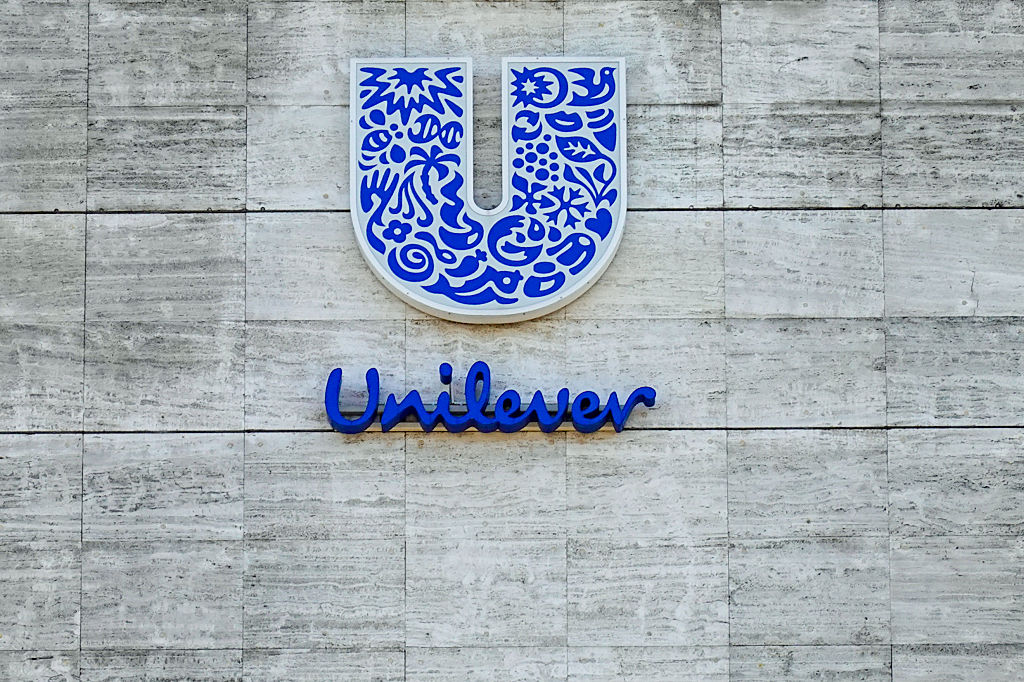How multi-asset trusts can help you deal with volatility
Multi-asset trusts help navigate global uncertainty and provide investors with an added layer of protection through diversification


The world has always been an unpredictable place for investors, and it has become more so over the past five years. Digitisation is partly to blame. News can travel from one side of the planet to another in seconds. The news can then be manipulated and redistributed in a heartbeat, sometimes with devastating consequences. Digital technology has also accelerated the pace of change across the economy. Start-ups powered by AI are reaching revenue milestones once thought impossible.
Y Combinator (the start-up accelerator known for backing Airbnb and Dropbox) recently said its latest batch of tech start-ups was growing at 10% per week, an unprecedented rate in a start-up venture. Most of these companies would have had to hire large teams of expensive human coders a few years ago. But today, 95% of the code has been written by AI.
These digital changes are coming at a time when populist political parties have upended the global political order. Donald Trump’s global trade war has disrupted trading networks established over decades and threatened the dollar’s status as a safe haven. Furthermore, the world’s largest countries are drowning in debt, severely hampering their ability to respond to future crises.
MoneyWeek
Subscribe to MoneyWeek today and get your first six magazine issues absolutely FREE

Sign up to Money Morning
Don't miss the latest investment and personal finances news, market analysis, plus money-saving tips with our free twice-daily newsletter
Don't miss the latest investment and personal finances news, market analysis, plus money-saving tips with our free twice-daily newsletter
Multi-asset trusts offer added protection
Against this backdrop, it is worth considering the place of multi-asset trusts within a portfolio. Maggie Fanari, CEO at J. Rothschild Capital Management, the manager of RIT Capital Partners (LSE: RIT), notes that multi-asset trusts such as RIT “offer investors access to differentiated global strategies, hard-to-reach assets, and long-term structural themes, making them highly complementary to most portfolios… A multi-asset approach gives us the ability to respond decisively to shifting macroeconomic conditions across a market cycle.”
Multi-asset trusts also provide investors with an added layer of protection through diversification. “Diversification is famously the only ‘free lunch’ in finance,” says Alastair Laing, CEO at CG Asset Management and co-manager of Capital Gearing Trust (LSE: CGT).
The closed-ended structure of an investment trust is perfectly suited to diversification and multi-asset holdings, some of which are likely to be illiquid. “Our permanent capital base gives us a structural advantage, enabling us to maintain conviction in high-quality investments… ride out short-term volatility, and allocate meaningfully to less liquid opportunities,” says Fanari.
Of course, investors could build their own multi-asset portfolio – encompassing assets such as bonds, equities, gold and even exposure to illiquid assets, such as private equity and renewable energy – via investment trusts. However, this comes with another set of risks. “This requires significant effort and could be tax-inefficient if capital gains tax is crystallised each time rebalancing occurs,” explains Laing.
Investors pay a fee for a trust’s portfolio management, but they’re paying for the managers’ skill. There are also tax benefits, as the assets remain within the trust. A trust such as RIT also provides exposure to somewhat exclusive private-market themes. “We also benefit from access to specialist managers,” says Fanari. “These specialist partners value our long-term, patient capital.” All of the big multi-asset trusts, Capital Gearing, Personal Assets (LSE: PNL), RIT and Caledonia Investments (LSE: CLDN) offer something slightly different, with the latter more focused on private equity. Capital Gearing and Personal Assets have also favoured a more defensive approach, focusing on bonds (mostly inflation-linked), gold and equities.
Personal Assets’s co-managers, Sebastian Lyon and Charlotte Yonge, say the investment team’s views in recent years have been “shaped by an expectation of regime change”. Inflation, government debt, shifting political sands, economic uncertainty and technological change have created a “world of greater uncertainty, higher inflation and a bond bear market, which began in the summer of 2020. Thus far, the 2020s are looking very different from the 2010s”.
The managers have shifted the portfolio away from risk assets to “ complementary asset classes that may offset falls in equity markets”. They’ve also reduced exposure to the US dollar “as investors increasingly question the dollar’s position as the world’s reserve currency”. Instead, Personal Assets has been adding to its yen holdings. Index-linked bonds play a key part of the wealth-protection strategy for Capital Gearing and Personal Assets. “We consider that the role inflation-linked bonds play in a fiat monetary system is the same as the role gold played under the gold standard – that is to say, the closest asset class to risk-free,” says Laing.
Charlie Morris, the founder and chairman of ByteTree, argues that investors should go one step further. “Hold bitcoin for return as it catches up with gold as a reserve asset, and gold as a hedge. I believe the risk-weighted combination of the two assets is the optimal approach for asset allocators. In my opinion, gold is the reserve asset for the real world, and bitcoin is the reserve asset for the internet.”
Having a small amount of bitcoin in a portfolio has been a sensible decision for the past few years. It illustrates why it’s reasonable to consider a range of assets across a portfolio. Multi-asset trusts can take some of the effort out of this decision-making process. Not all investors will be comfortable with this approach, but it’s worth considering. The goal of a multi-asset portfolio is to reduce risk and volatility via diversification and enhance long-term returns.
“The pain of losses [outweighs] the joy of profits, which can lead to poor investment decisions,” says Laing. “By investing to avoid significant drawdowns, investors can protect their portfolio against their poor, emotion-driven decisions.”
This article was first published in MoneyWeek's magazine. Enjoy exclusive early access to news, opinion and analysis from our team of financial experts with a MoneyWeek subscription.
Get the latest financial news, insights and expert analysis from our award-winning MoneyWeek team, to help you understand what really matters when it comes to your finances.

Rupert is the former deputy digital editor of MoneyWeek. He's an active investor and has always been fascinated by the world of business and investing. His style has been heavily influenced by US investors Warren Buffett and Philip Carret. He is always looking for high-quality growth opportunities trading at a reasonable price, preferring cash generative businesses with strong balance sheets over blue-sky growth stocks.
Rupert has written for many UK and international publications including the Motley Fool, Gurufocus and ValueWalk, aimed at a range of readers; from the first timers to experienced high-net-worth individuals. Rupert has also founded and managed several businesses, including the New York-based hedge fund newsletter, Hidden Value Stocks. He has written over 20 ebooks and appeared as an expert commentator on the BBC World Service.
-
 Why UK investors are backing British stocks in 2026
Why UK investors are backing British stocks in 2026The UK stock market may be lacking fashionable technology shares but investors are keen to buy British next year
-
 UK inflation live: Inflation fell to 3.2% in November
UK inflation live: Inflation fell to 3.2% in NovemberA rise of 3.2% in CPI inflation in the 12 months to November undershoots almost all expectations
-
 Quality emerging market companies with consistent returns
Quality emerging market companies with consistent returnsOpinion Mark Hammonds, portfolio manager at Guinness Global Investors, selects three emerging market stocks where he'd put his money
-
 British blue chips offer investors reliable income and growth
British blue chips offer investors reliable income and growthOpinion Ben Russon, portfolio manager and co-head UK equities, ClearBridge Investments, highlights three British blue chips where he'd put his money
-
 Coreweave is on borrowed time
Coreweave is on borrowed timeAI infrastructure firm Coreweave is heading for trouble and is absurdly pricey, says Matthew Partridge
-
 Renewable energy funds are stuck between a ROC and a hard place
Renewable energy funds are stuck between a ROC and a hard placeRenewable energy funds were hit hard by the government’s subsidy changes, but they have only themselves to blame for their failure to build trust with investors
-
 Profit from document shredding with Restore
Profit from document shredding with RestoreRestore operates in a niche, but essential market. The business has exciting potential over the coming years, says Rupert Hargreaves
-
 The war dividend – how to invest in defence stocks as the world arms up
The war dividend – how to invest in defence stocks as the world arms upWestern governments are back on a war footing. Investors should be prepared, too, says Jamie Ward
-
 Literacy Capital: A trust where great returns fund a good cause
Literacy Capital: A trust where great returns fund a good causeThere’s plenty to like about specialist private-equity trust Literacy Capital, says Max King
-
 An AI bust could hit private credit – could it cause a financial crisis?
An AI bust could hit private credit – could it cause a financial crisis?Opinion Private credit is playing a key role in funding data centres. It may be the first to take the hit if the AI boom ends, says Cris Sholto Heaton